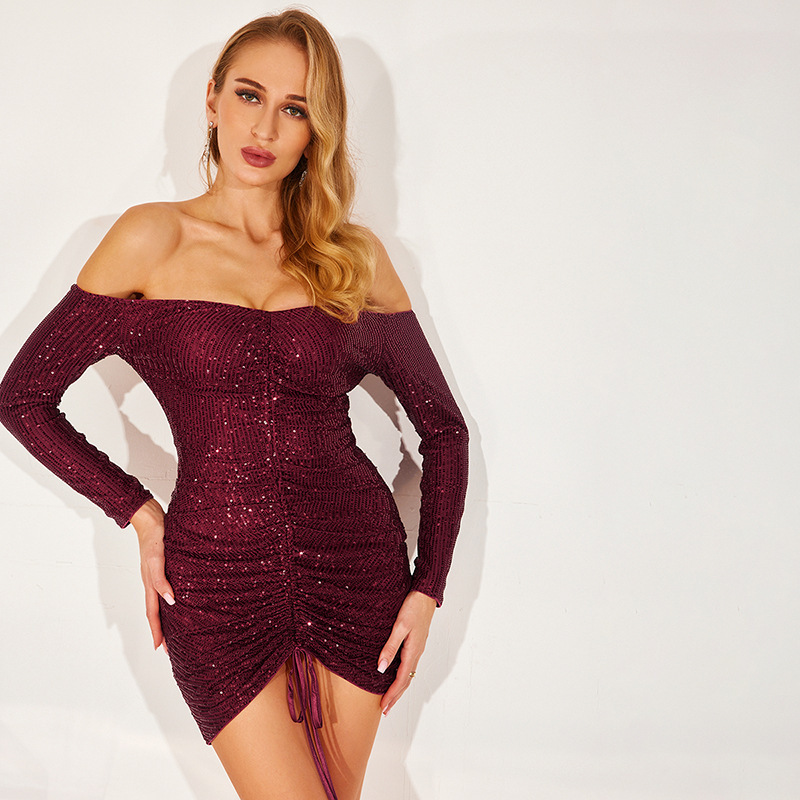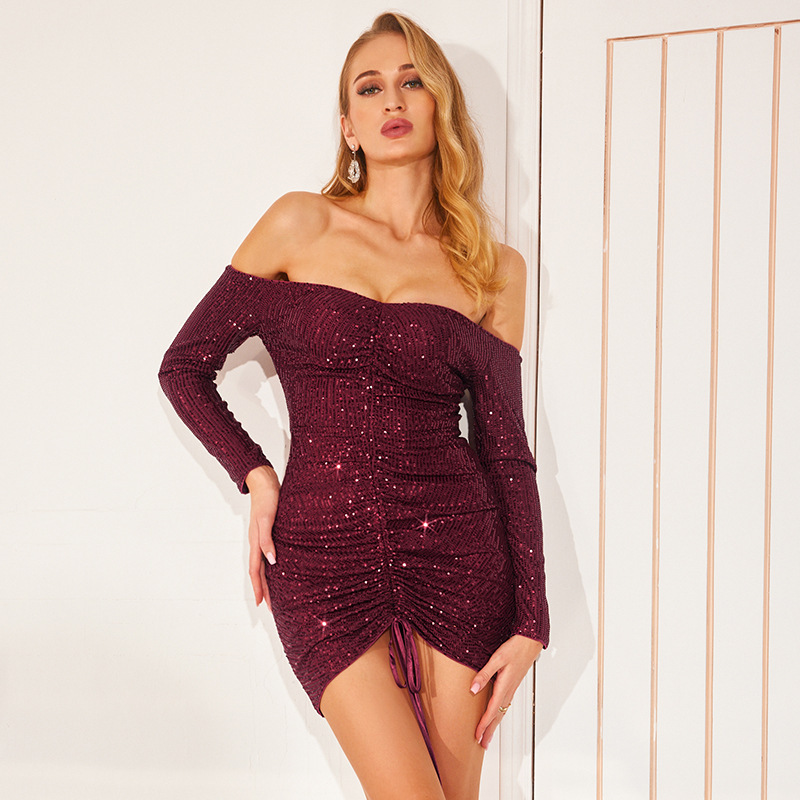(1) Wrong Yarn
Appearance: In the hair of the knitted fabric, laterally continuous terry loops are woven from coarser or finer yarns of a larger gauge. Most of them are single roots, but even there are parallels or multiple roots. According to the dense, thick and normal are different.
Cause: When weaving knitted fabrics, operators mistakenly use non-specified counts or yarns of Danny size for knitting. Misuse of the finer yarns makes the fabric appear thinner. Misuse of thicker yarns results in thicker fabrics.
(2) Wrong End
Appearance: The warp yarns of woven fabrics have a single or side-by-side thickness that is not specified. If it is a fine yarn, it is called Fine End. If it is a thicker yarn, it is called Coarse End.
Contributing factors: The number of bobbin yarns involved in the warping of the menstruation was incorrect and the warp yarns were not specified. This kind of embarrassment is often a full-blown person.
(3) Wrong Pick
Appearance: The weft of the woven fabric has one or more thicknesses that are not specified. For finer yarns, FinePick is called. If it is a thicker yarn, it is called Coarse Pick.
Causes: When weaving, the weft yarn of the weft tube, or the number of bobbin yarns fed by the shuttleless weaving machine is wrong, and we use the weft yarn that is not specified. After the operator discovered it, it was removed and shut down. However, weaving machines that change tubes automatically are often not easy to find.
(4) Wrong Weaving
Appearance: The weave method is wrong, and the texture of the cloth is different from that of the original designer. For example, the left twill is woven into a right twill.
Causes: Mostly caused by wearing errors. Others, such as jacquard fabrics are incorrect, warp yarns are misaligned in multi-standard warp fabrics.
(5) Wrong Draw
Appearance: Two warp yarns that are adjacent to each other are woven together into one fabric. Regardless, the root (actually two) yarns appear particularly thick. Such crickets are all perfectly matched. If they are found in the primary weaving of the warp beam, removing one of the roots in the tandem can be completely avoided.
Causes: 1) When neglecting the warp draft, it is negligence to treat two strands as one. 2) After the sizing, the yarn is not clear, the two stick together and form the same root. 3). Two threads penetrate the same heddle at the time of threading.
(6) Mispick
Appearance: Two wefts are woven into the same weaving mouth and even have three or more roots. The length of the parallel weft ranges from the full width of the fabric to more than 10 centimeters near the edge of the cloth.
Cause: 1) the whole fabric width and length of the weft, the line downtime due to troubleshooting, check not drive the cloth fell. Or the weft pin failed and the weft break did not stop. 2). Non-full length latitude and longitude, due to the length of the insurance yarn is not enough, the side cut set improperly or not sharp enough, and after the broken weft did not clear the yarn tail.
(7) Pick-Out Mark
Appearance: The weft of the weft cloth is not well dismantled. After weaving continues, there are still marks on the cloth surface.
Causes: In the weaving of fabrics, the operators found that wefts were weaving at different places, or weaving severe roads and thinning. We immediately shut down the wefts that weaved in and cut them out. When the warp yarn is removed, the warp yarn is rubbed off by the weft yarn, resulting in a large amount of hairiness. Therefore, after reweaving, the warp yarn exhibits a width-equivalent multi-hairiness cloth surface in the scope of original dismantling.
(8) Broken End
Appearance: The warp of the fabric breaks one or more roots, resulting in a large distance between the two adjacent yarns. In plain weave fabric, it becomes two broken yarns juxtaposed, as if by. In twill weaves, there is a phenomenon of discontinuity.
Causes: The warp yarn is interrupted by weaving and the stopping device fails. Weaving continues without weaving the warp yarn.
(9) Broken Pick
Appearance: The weft yarn in the fabric breaks, but the distance between the ends of the break is very short, ie the length of the cut off is small. This type of defect is generally not significant.
Causes: 1) The weft yarn breaks in the weaving but it continues to weave in a moment, only a short distance away. 2). There are serious rough knots and flying flowers on the weft yarn, which causes the weft to break when it is removed.
(10) 100 feet (lacking)
Appearance: This kind of defect only occurs in the twill weave, in the warp of the same part of each complete organization, at the same time floating on the surface of the cloth, it resembles a set of many feet.
Causes: When a twill weaves less weft yarn, the interweaving point decreases, and part of the warp yarn floats on the weft yarn twice.
(11) End Snarl
Appearance: One of the warp yarns in the fabric has a small amount of curling and twisting and weaving into the cloth. Fabrics made from strong twisted yarns are more likely to occur.
Causes: One of the root warp yarns was loose during warping, causing a period of curling.
(12) Filling Snarl
Appearance: Fabric weft yarns have a small amount of curling and weaving into the fabric. Fabrics made from strong twisted yarns are more likely to occur.
Causes: 1) In the weft bobbin or in the bobbin yarn used for the weft yarn, the small yarn is already curled up. 2). The weft bobbin is improperly formed and it is not smooth when the yarn is unreeled. 3). The tension of the weft yarn is too small, and the mouth of the weaving is not clear.
Appearance: Between the two warp yarns, there is a large gap between the two warp yarns, and weaving weft yarns can be seen.
Causes: 1) The deformation of the steel rakes has failed to control the warp yarns in position, or the dents have loosened. 2). There are one or a few gaps in the warp yarn and the tension applied during weaving is too large.
(16) Temple Mark
Appearance: Approximately 2 to 5 cm wide acupuncture or traces of acupuncture in the cloth. In severe cases, the weft yarns of the part are wavy and curved.
Cause: The thickness of the needle used in the temple supporter is not appropriate, and the stall supporter stuck in the ring cannot be rotated, or the rotation is not smooth enough.
(17) Connector (Knot)
Appearance: Thick and round ball with tight knotting on the fabric.
Cause: After the warp or weft breaks and joins, the knots hit are too large to protrude from the fabric.
(18) Float
Appearance: warp or weft yarns are not woven in accordance with the specified organization, but float on the surface.
Cause: The angle at which the weaving mouth is opened is too small, or the heald wire is suspended unevenly, and a few warp yarns are particularly loose.
(19) Weaving Hole
Appearance: The warp and weft yarns of the embroidered fabric break, forming holes of different sizes. This kind of flaws can easily occur in fabrics with relatively longitude and latitude.
Causes: The friction of the shuttle, the licker-in holding the fishing hook, will cause the warp and weft to break. In addition, the warp can also break the warp.
(20) Slack End
Appearance: The warp yarn weaves into the cloth, in the interweaving point, is convex and concave on the surface of the cloth, and it is arched upward. Generally speaking, it is called ribs in the factory.
Causes: The warp yarns of a single warp are under less tension during weaving, or the warp yarns are too loose after the warp yarns are joined.
(21) Slack Filing
Appearance: A weft yarn that is woven into a cloth, at the point of its intertwining, protrudes from the cloth more than normal and has a phenomenon of upward arching. Generally not obvious.
Cause: A single weft yarn has less tension when weaving.
China One Shoulder Dress,One Shoulder Ruched Bodycon Dress manufacturers, welcome One Shoulder Ruched Club Dress,One Shoulder Slit Dress purchasers from worldwide to visit our site.
It is suitable for women with dominant shoulders. Right-angled shoulders, flat shoulders, and skinny shoulders are all suitable for this matching method, but women with narrow shoulders, shrugs and wider shoulders are not suitable. One-word shoulders have an age-reducing effect. Even older women, if matched well, can make themselves look younger than they actually are, and are exquisite, charming, noble and unique. The one-shoulder is a girl's "exclusive" dress, which is not only thin, but also sweet and fresh. The color of the one-shoulder determines the overall age of the match, and the length of the cuffs and skirt of the one-shoulder determines the overall temperament of the match.


One Shoulder Dress,One Shoulder Ruched Bodycon Dress,One Shoulder Ruched Club Dress,One Shoulder Slit Dress
Dongguan Kaqi (Kaachii) Garment Co., Ltd , https://www.dressmfg.com
![<?echo $_SERVER['SERVER_NAME'];?>](/template/twentyseventeen/skin/images/header.jpg)